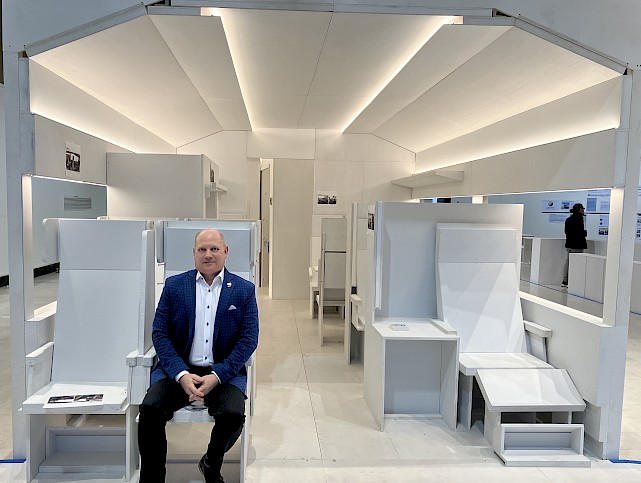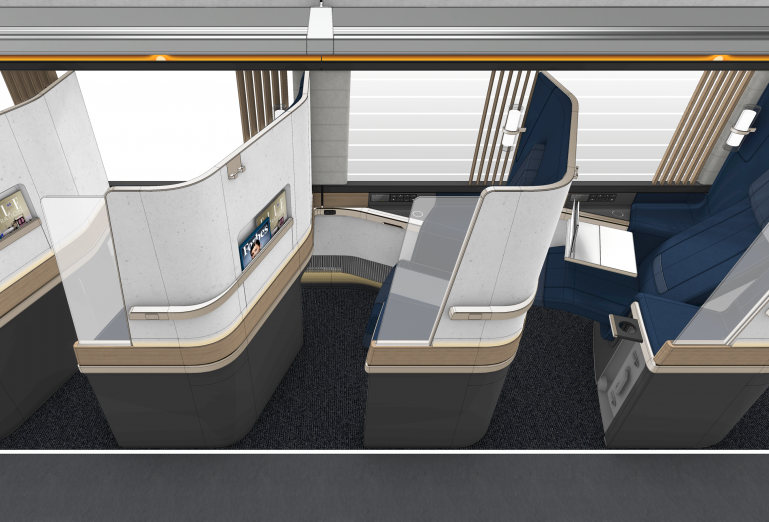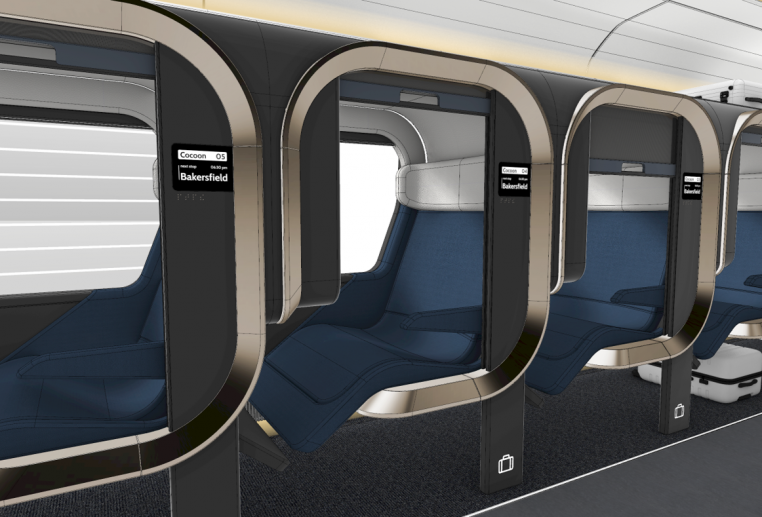Happening Now
California High-Speed Interiors Walkthrough
February 2, 2024
By Jim Mathews / President & CEO
The California High-Speed Rail Authority is extremely serious about making sure that folks with physical challenges of all kinds aren’t just able to ride the high-speed train but also able to experience all the same amenities as any other passenger – a commitment I was able to see first-hand last week during a walkthrough of a train car mockup in Sacramento.
The Authority invited me, along with several other stakeholders, state officials, and representatives of the accessibility community, to participate in the walkthrough to offer our advice and feedback on the interior layouts of their new trainsets.
Working alongside the international consulting arm of Germany’s Deutsche Bahn railroad, design specialists neomind, and other European high-speed rail experts, California has spent the past year or so trying to incorporate the latest features for accessibility, with several feedback rounds already finished.
I was impressed with the thought and care that went into so many design decisions. There were very obvious kinds of things, such as space for wheelchairs to maneuver into and out of bathrooms, or buttons at the bottoms of floors in case a mobility-challenged person were to fall and need to call for assistance from the floor. But the designers also took into account vision challenges, hearing impairments, sensory issues associated with neurodivergence, and even the geometry and arrangement for passengers with dwarfism.
California has a built-in advantage from its decision to specify railcars that are about one foot wider than those in service today. Those extra few inches make all the difference for creating ADA-compliant aisles without sacrificing seat width.
Late last week I did my walkthrough in what’s called a “white mockup.” It’s a one-to-one scale model of a train car in plywood and foam, with the idea of visualizing the scale, proportions, and major component elements of what California expects to specify to its manufacturing vendors.
One obstacle to realistic geometry was the fact that the mockup itself wasn’t large enough to show what an entire railcar full of a particular type of seat would be like. Spacing between certain seats had to give way to the reality that several “classes” had to be represented in perhaps a 10- to 12-foot length. This was an important caveat, because one of our feedback items would otherwise have been that the seat pitch at 24 inches is too small.
Among the many positives were the family area at the back of the train with space for youngsters to play while supervised by their parents, the genuinely enormous restrooms, ample luggage space at ankle level as well as in racks above (for those who might have trouble lifting bags on to an upper-level rack), and the so-called “cocoon” seating pods, a more premium offering that might offer nearly the same level of privacy as an Amtrak roomette.
We were proud to be asked to participate, and we’re excited to continue to be a part of California’s accessibility efforts for these new trains. That’s because we think it’s important that one of America’s first true high-speed rail services is accessible and useful for everyone who wants and needs to use it. Real high-speed trains, for everyone!
"When [NARP] comes to Washington, you help embolden us in our efforts to continue the progress for passenger rail. And not just on the Northeast Corridor. All over America! High-speed rail, passenger rail is coming to America, thanks to a lot of your efforts! We’re partners in this. ... You are the ones that are going to make this happen. Do not be dissuaded by the naysayers. There are thousands of people all over America who are for passenger rail and you represent the best of what America is about!"
Secretary Ray LaHood, U.S. Department of Transportation
2012 NARP Spring Council Meeting



Comments